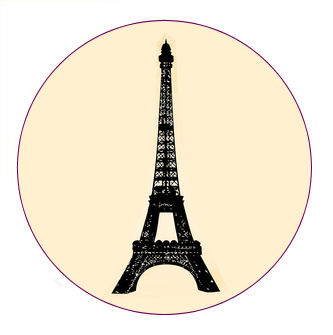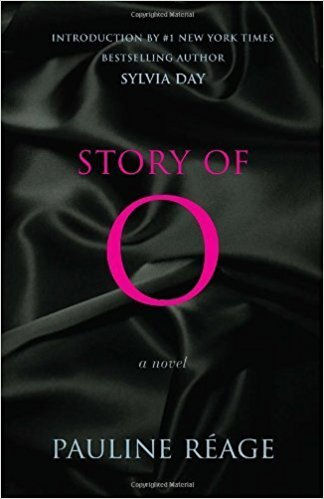|
Story of O: A Novel by Pauline Réage
Set in Paris, it's a Mysterious Tale of Erotic Adventure
 Story of O: A Novel by Pauline Réage Story of O: A Novel by Pauline Réage
Today, the world knows many of the secrets behind the unknown author (a woman) and the object of her adoration (a man). All of that was a great surprise when the truth finally came out, after nearly half a century of secrecy that baffled the world (even in France). It's a modern archetype—made into movies, imitated, even lived by those with a passion for bondage and submissive sex. For all the frenzy this novel has aroused (no pun intended), truth and logic can have a calming effect…
Mysterious Tale of Bondage, Finally Revealed. As we learn from Wikipedia, "Story of O (French: Histoire d'O) is an erotic novel published in 1954 by French author Anne Desclos under the pen name Pauline Réage, and published in French by Jean-Jacques Pauvert." The novel won the French literature prize Les Deux Magots, though it was cited (in France) for obscenity but the charges were dismissed in court.
Story. In a nutshell, it's an erotic novel about a Parisian woman who regularly visits a mythic castle in Roissy-en-France to engage in submissive sex with men, for the special pleasure of Sir Stephen. That is a section in the northeast of Paris, formerly the location of Roissy airport, now of Charles DeGaulle airport. The novel aroused ire and hysteria from various quarters. With all due respect, my feeling is that it is best to approach the phenomenon (for such it became) in the light of its factual background, as best we know the details today. Facts and logic often have a profound calming effect. It's called understanding, and then we move on.
Secret. The novel was written in Paris sometime before 1955 by by a 'Pauline Réage' and published by Gallimard Presse editor Jean-Jacques Pauvert (who evidently knew how to keep a secret). After decades of mystery, it was gradually revealed that the author was not a man, as most had thought, but a woman editor in Paris named Dominique Aury.
In turn, it was revealed not long afterward that Dominique Aury was a pseudonym of a prim, reserved little cute but mousy woman named Anne Desclos (1907-1998) who revealed her secrets before dying at age 90. Anne lived a rather active sex life of her own, being bisexual and in love at various times with either a man or a woman. The great male passion in her life was for Jean Paulhan (1884-1968), a famous Parisian editor who had been a leader of the Resistance during the Nazi occupation, and had served time in a Gestapo prison but survived the war. Near the end of her life, Declos revealed that The Story of O consisted of a series of 'love letters' by Desclos (Aury) to Paulhan.
Like E. L. James writing the blog posts that would become Fifty Shades of Grey many years later, Desclos never imagined that her snippets or stories would see press. Paulhan, an inveterate editor and publisher, loved what he read, and wanted to preserve Anne's writings. He wrote a preface admiring the work, without revealing the identity of its author.
Key to understanding this is the fact that Paulhan was a passionate admirer of the Marquis de Sade (1740-1814). At the time of publication (1955), Desclos was about 48 to the elder Paulhan's 71. He was still active chasing women, and it seems she felt she must do something a little extra to keep him interested in her. He had claimed that no woman could write erotic or pornographic fiction, so she proved him wrong, as his admiration for her exercise shows.
In the light of that story, we have another indication that we should keep our shirts on, refrain from hyperventilating, and remind ourselves that there is often a clear, calm, logical reason for certain things that may carry the less critically endowed to excess and frenzy. It was just a series of love notes, and an in-joke basically. Ann Desclos' love notes made literary history, as happened with E. L. James' 'midlife crisis' (as that brilliant advertising executive describes her surprising and overwhelming success).
E. L. James was posting spicy snippets on a fan site devoted to the talented Utah author Stephenie Meyer, never expecting to become world-famous and rich. Mrs. James wished to add sex and spice to the devoutly (strict LDS) nonsexual stories of Mrs. Meyer.
Continued at right…

|
 
|
…Continued from bottom left.
Mrs. Meyer, for her part, in a totally separate context, revealed that one of the primary inspirations for her Twilight series of vampire tales arose from her admiration of William Shakespeare's fantasy play A Midsummer Night's Dream. As I make a point in my discussion of George Orwell (Down and Out in Paris and London, 1933), considering his influence by Jack London, who in turn had many inspirations including Sinclair Lewis, all of it is connected. In fact, in my own Valley of Seven Castles (a Luxembourg Thriller that gets rolling Paris and climaxes, no pun intended, in Luxembourg), I sketch out that novel's connections with John Buchan's 1915 thriller The Thirty-Nine Steps, as well as two Alfred Hitchcock films; and Robert Ludlum's 1980 novel and its derivative 2002 great thriller movie The Bourne Identity (a Paris-centric thriller). We're all connected in so many strange and mysterious ways.
We can learn from all this. The facts, when we are adrift on a sea of hysteria and misinformation—('fake news' as it is sometimes called today by those who blame their targets, while they themselves churn it out)—usually seem to have a calming effect. The truth behind l'Histoire d'O may serve as a parable for our times. Who profits from all the excess hysteria? Maybe it's the shirt manufacturers, who love to sell people new shirts, after they tear theirs off in a media-induced frenzy designed to sell product. Maybe they should actually sell wool shirts for sheep.
What Are Magots? (Things You Always Wondered). No, they have nothing to do with those fat, wriggling white worms (maggots) that infest overly ripe food sources like your garbage pail. Mention of the prize Les Deux Magots will remind readers of the famous watering hole at 23 Rue de Buci,Saint-Germain-des-Prés, 6th Arrondissement. That part of Paris was also at one time a publishing hub, and housed several famous intellectual hangouts years ago in addition to Les Deux Magots. The bar in question was frequented by local and ex-pat authors in the 1920s, including James Joyce, Ernest Hemingway, F. Scott Fitzgerald, as well as natives including Simone de Beauvoir, Albert Camus, and Jean-Paul Sartre (it's a long, long list). The name means 'The Two Litte Wise Men' (Magicians). It's a diminutive of mage, in English 'mage.' It can mean wizard, alchemist, or magician, and the like. The bar, originally a millinery shop, was so named because of two statuettes against the wall inside. Their origin may be more mysterious than that of the O-Story.
|
|

